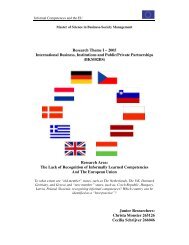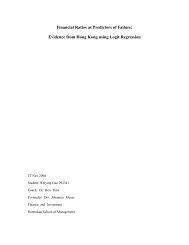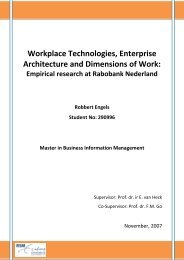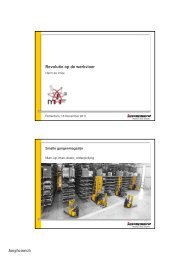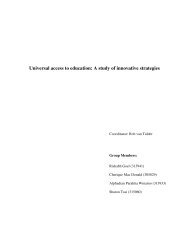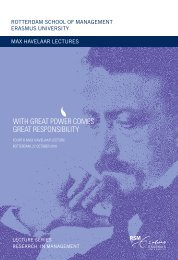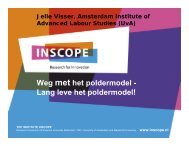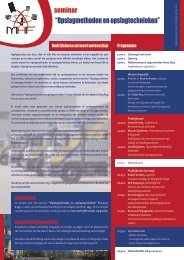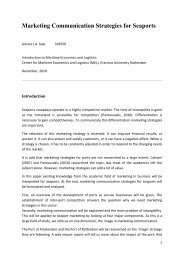here - ERIM - Erasmus Universiteit Rotterdam
here - ERIM - Erasmus Universiteit Rotterdam
here - ERIM - Erasmus Universiteit Rotterdam
Create successful ePaper yourself
Turn your PDF publications into a flip-book with our unique Google optimized e-Paper software.
A validation Study of House of Quality key performance indicators<br />
service exceeds the perception of a service. In order to measure how well different service attributes<br />
are able to satisfy the needs of customer the Kano model was developed (Kano, 1984). Kano’s model<br />
classifies the attributes into three categories, according to the level of satisfaction.<br />
The present study applies the SERVQUAL model to measure the quality of the services offered by the<br />
online union. By including Kano’s model we are able to identify how well the different service<br />
attributes of the online union are satisfying the needs of the members. The SERVQUAL model only<br />
identifies gaps between member’s expectations and perceptions but does not mention how the<br />
explored gaps can be closed in order to improve the performance of the online union. T<strong>here</strong>fore,<br />
based on the concept of Tan and Pawitra (2001), the needs of the members identified by the<br />
SERVQUAL model will be integrated into the concept of Quality Function Deployment (Akao, 1990).<br />
This in order to provide information how De Unie can improve the design the online union.<br />
Quality Function Deployment (QFD) represents a powerful structured methodology for exploring and<br />
steering interaction between different contributors in the product or service development or<br />
improvement process (Tidd 2001). This is also the case when designing IT-related products of<br />
services, like in this case the online union. Within the theory of QFD t<strong>here</strong> are two dominant models;<br />
the four phase model and Akao’s Matrix of Matrices Model. This research study will make use of the<br />
four phase model of QFD. The Four-Phase model divides a product or service development process<br />
into four phases. For each phase a matrix in shape of a house is used.<br />
In order to translate the needs and requirements of the member into the design process, the needs<br />
explored by the SERVQUAL model will be integrated into the first house of the four phase model; the<br />
House of Quality (HOQ). The HOQ is used to depict customer requirements, technical measures,<br />
target values, and competitive analysis (Eureka and Ryan, 1994). T<strong>here</strong>fore the HOQ will be an<br />
important instrument in this ongoing process of improvement in order to match the needs and<br />
requirements of the members and the design requirements of the online union.<br />
15




